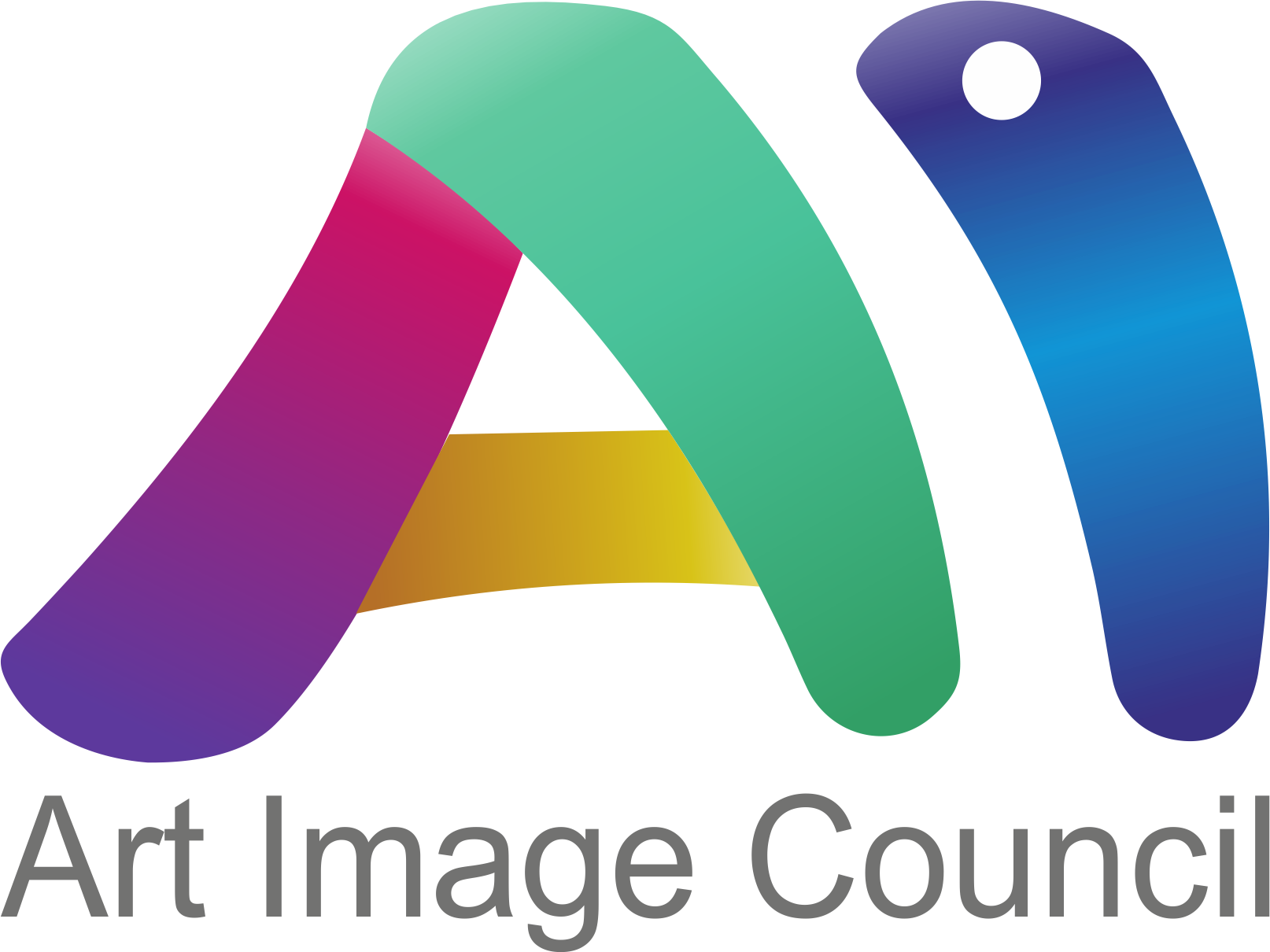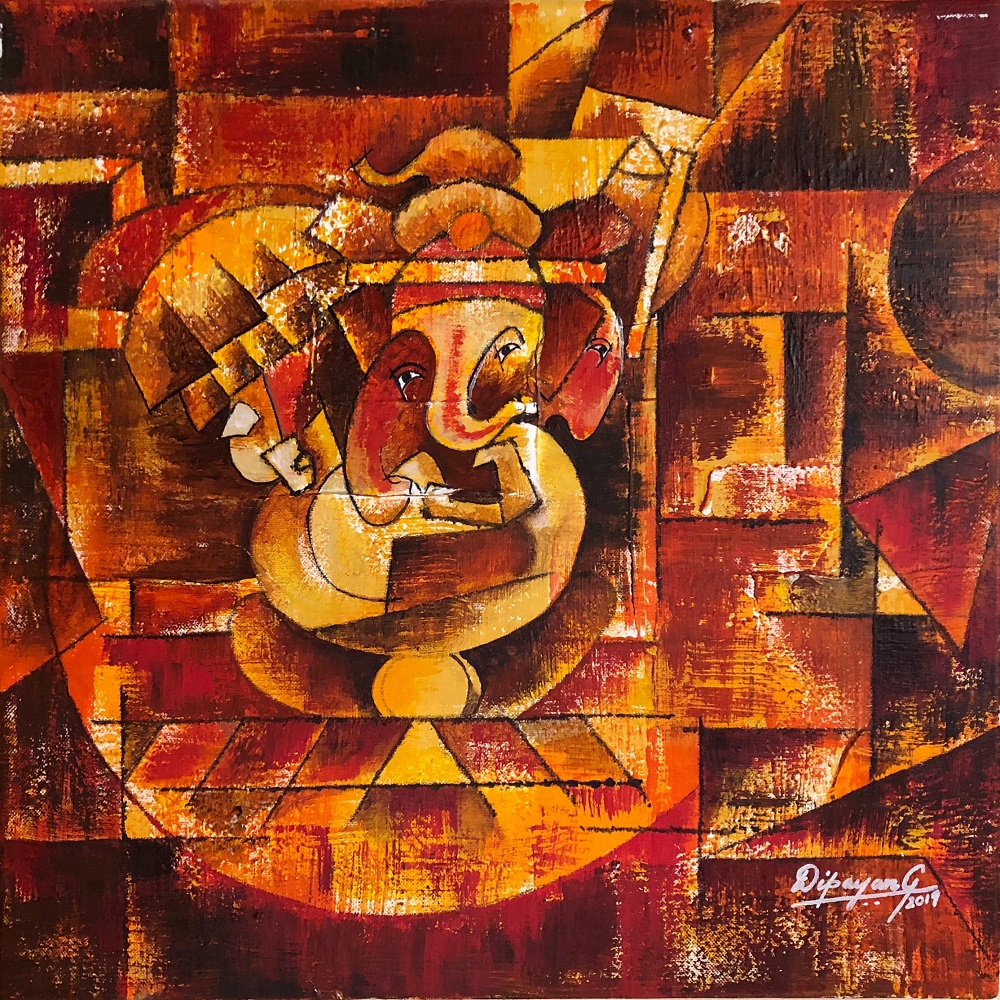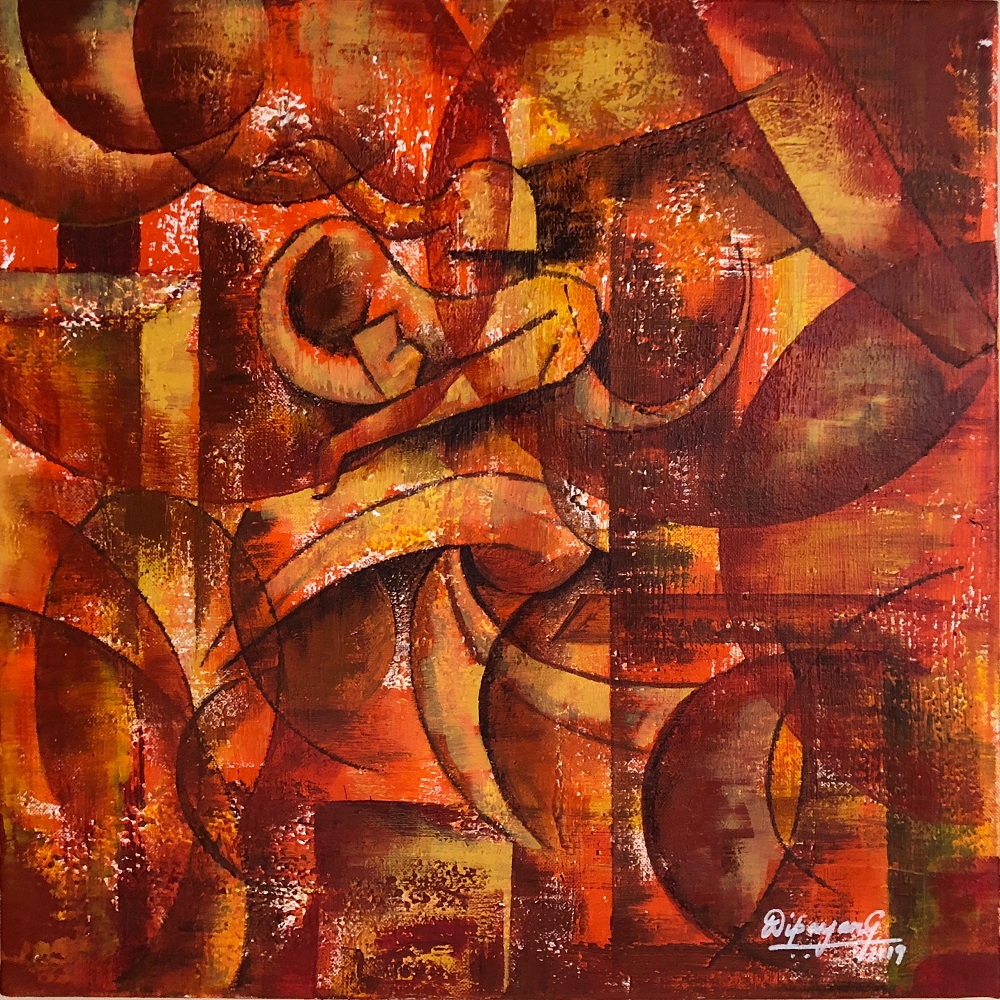Dipayan Ghosh
Artist Statement
My art is theme based and looks at expressing a distinct subject in the midst of abstract techniques. I am deeply enthused with the deep emotions and beliefs of India and her people and strive to express those traditions, customs and expressions through bold, earthen and somewhat fiery colours. And hence one would find a lot of Indian Reds, Indian Yellows, Pyrrole Orange and shades of Terracotta, Ochre or Sienna in my artwork.
As themes, one would, quite frequently, find me adopting a theme of Indian heartland rituals and practices (as in “Heartland Harmonics”) or the adoption of Vedic philosophy of “Panchakosh”; and occasionally the moods and emotions of my leading lady in “Reflections”.
I am deeply inspired by cubism as well as impressionism art movements and, somewhat naturally, look at blending the two in my conceptualization of themes. Nevertheless, I love to keep my primary subject, or the key actor, of my story slightly close to realism.
While making my artwork, I am deeply fascinated in ‘roughing’ up my stretched canvas after priming it with gesso. I would invariably use textures like resin sand, ceramic stucco or black lava to create the base notes. Then use several layers of ‘hatching-strokes’ with a broad brush of bold colors to lay the medium notes adopting a cubist-impressionism style; before toping the canvas with the prime actor of the story using a slightly realistic method.
The finished work would most-certainly be full of bravado and boldness to light up a positive impact on the soul.
Project Panchakosh
The number five (5) known as Pancha in Sanskrit has a unique significance in various tenets of Indian Mythology. It is widely associated with various concepts of spirituality, aayurveda, astrology and subtle elements of nature. My work here has been inspired by PanchaKosh: Annamai (Sheath of Nourishment), Praanamai (Sheath of Vitality), Manomai (Sheath of Emotions), Viggyaanamai (Sheath of Intellect) and Aanandamai (Sheath of Blissfulness), which are the five sheaths that the soul is covered with. These layers, very similar to “the Onion Metaphor”, gradually unveil the truth of the soul. The first is about the physical body, then comes the life, then the emotions, and knowledge and the last one the enlightenment through knowledge and is nearest to the soul. Here, I have deconstructed perspective with a tinge of cubist methods and overlaid it with wild impasto and textures; and associated each of the kosh (sheath) with a mythological symbolism, Ganpati for Annamai, Nataraj for Praan or Vitality, Draupadi for Manomai, Saraswati for Viggyaanamai and Buddha for Blissfulness. Also tried to lighten up the colours as we reach nearer to the soul.





